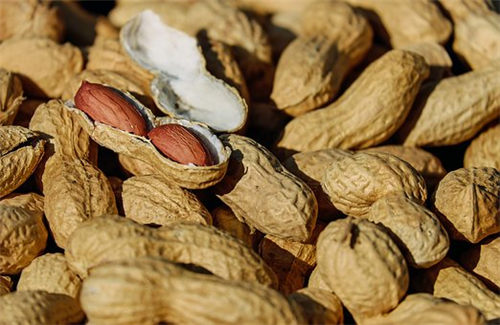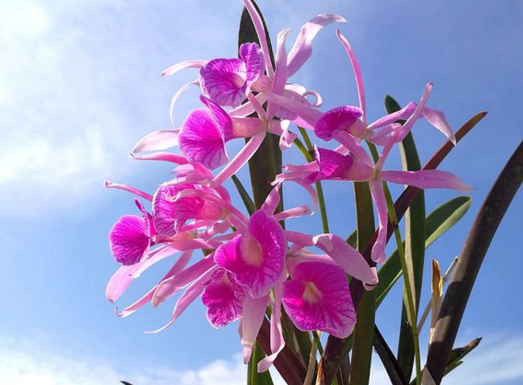What varieties of peanuts can produce high yield in 2018? How do you plant it?
In China, peanut is one of the most common crops and one of the economic sources of farmers' life, but because there are many varieties of peanuts and the ones planted in different places are different, it is necessary to select good varieties for high yield of peanuts. What varieties of peanuts will be planted in 2018? How do you plant it?

Introduction of high-yield peanut varieties:
According to the authoritative recommendation of the Ministry of Agriculture, the following peanut varieties have high and stable yield, strong drought resistance, wide adaptability and strong disease resistance.
1. Huayu 33, the growth period of spring sowing is 128days, and the average yield per mu is 370.5 kg.
2. Yuanza 9847, the growth period of summer sowing is about 110d, and the average yield per mu is 314.4 kg. The above two varieties are suitable to be planted in Henan, Shandong, Hebei, Beijing, Jiangsu and Anhui provinces north of Huaihe River.
3. Jihua 4, the growth period of spring sowing is 120-130 days, and the average yield per mu is 350.6 kg. It is suitable for spring sowing and plastic film mulching in Henan, Shandong, Hebei, Shanxi, Beijing, Tianjin, Jiangsu, Anhui and other areas.
4. Zhonghua 16, the whole growth period is 122days, with an average yield of 313.9 kg per mu, which is suitable for planting in Sichuan, Hubei, Chongqing, Jiangxi, Anhui, Hunan, southern Henan, Jiangsu and other places.
5. Yueyou No. 7, the whole growth period is 128days, and the average yield per mu is 399.07 kg. It is suitable to be planted in Guangdong, Fujian, Jiangxi and Guangxi.
How to grow high yield?
I. Deep ploughing and soil preparation
1. Ploughing the soil deeply. In general, the peanut field should be ploughed deeply for 6 to 10 inches, which is beneficial to the good root growth and the increase of the number of lateral roots. It is beneficial to microbial activity and promote the growth of peanut rhizobium.
2. Fine soil preparation. To prepare the land early and get up the border, the width of the border is 3.6 to 4.5 feet, and the height of the border is about 4 to 6 inches. So that the soil has a certain period of time to sink and whitening and weathering, so as to achieve "upper pine and lower fruit", which is beneficial to maintain soil temperature, promote seed germination and seedling emergence.
Second, sowing and whole seedlings
The main results are as follows: 1. Sowing at the right time. The sowing time is different in the north and south, and the sowing time of spring peanut is mainly determined by temperature. Generally, the temperature is required to be stable above 15 degrees C.
2. Guarantee the whole seedling. (1) to select full and large pods to keep seeds, (2) to plant seeds in autumn in the south, and (3) to dry seeds with shells and peel them at the right time. (4) the seeds with thin or damaged seed coat are eliminated, and the large seeds are selected. (5) soaking seeds to accelerate germination and fattening seeds. Seed germination can be accelerated by soaking seeds with 2% plant ash solution and 2% lime water. (6) seed dressing with rhizobium agent. Where there are conditions, rhizobium agent can be used to mix seeds. (7) seed dressing with chemicals to prevent birds and animals from pecking at the seeds.
3. Reasonable close planting. The appropriate density of peanut should be determined according to natural conditions, variety characteristics and cultivation conditions. The yield of pearl bean spring peanut tends to increase with the increase of density in the range of 1.4 ~ 21000 seedlings per mu.
III. Fertilizer and water management
1. Scientific fertilization: fertilizer is the material basis for ensuring high yield of peanuts. The principle of fertilization for high-yield peanuts is the dialectical fertilization management method of "promoting seedlings with fertilizer, promoting beans with seedlings and making seedlings with beans". During the whole growth period, peanut absorbed nitrogen > potassium > phosphorus, and the absorption ratio of nitrogen, phosphorus and potassium was 4.3: 5.3.
(1) nitrogen fertilizer application technology. The principle of applying nitrogen fertilizer is heavy in the first and light in the second. Peanut is a leguminous crop, which absorbs a large amount of nitrogen, but it has its particularity in nitrogen fixation by rhizobium. The results showed that the nitrogen fixation effect of rhizobium increased gradually with the plant growth from the initial flowering stage to the podding stage. The peak of nitrogen fixation is generally at the end of flowering and the early stage of podding. 4/5 of the nitrogen nutrition needed by peanut plants comes from rhizobium, and only 1/5 is absorbed from its seeds and soil. On the basis of applying a certain amount of organic fertilizer, 20 kg of ammonium sulfate was applied per mu of base fertilizer or seedling fertilizer, and 10 jin of ammonium sulfate or 8 jin of urea was applied per mu before the early flowering stage.
(2) the application of phosphate fertilizer. It is estimated that for every 100 jin of pods, it is necessary to absorb 1 kilogram and 2.5 jin of phosphoric acid. The effect of combined application of phosphate fertilizer and nitrogen and potassium fertilizer is good, and it is suitable to be used as base fertilizer early. If you want to produce more than 800 jin per mu, generally use phosphate rock powder 120 kg 150 jin or ternary compound fertilizer 20 jin 25 jin.
(3) the application of potassium fertilizer. According to the test, it is necessary to absorb 2 kilograms of potassium oxide for every 100 jin of pods, and the effect of combined application of nitrogen and potassium fertilizer is good. If you want to yield more than 800 jin per mu, the general mu application amount of potassium sulfate is 50kg / mu, potash fertilizer should be applied by stages, base fertilizer is 18kg / mu, 12kg / mu, 12kg / mu, 8kg / mu, 12kg / mu, 12kg / mu and 12kg / mu, respectively.
(4) according to the situation of element deficiency, calcium, magnesium, sulfur fertilizer and trace element fertilizer can be applied appropriately. The nutrient absorption of peanut is affected by variety, planting period, growth period, planting density, soil fertility, soil moisture, climatic conditions and other factors, which can be used as a reference in fertilization.
2. Water demand management. The principle of water demand is "dry seedlings, wet flowers, moistening pods". Irrigation in the early growth stage of peanut should be carried out in the morning and evening to avoid violent sunlight and high ground temperature and damage the root system. When irrigation, should not flood irrigation and series irrigation, it is appropriate to speed irrigation and drainage, generally irrigation to 2/3 to four-fifths of the height of the border, let the water slowly seep into the border, and drain when the soil surface in the middle of the border begins to be slightly wet.
IV. Soil cultivation and weeding by ploughing
1. Check the seedlings and fill the gaps 3-4 days after the emergence of peanuts.
2. Ploughing and weeding.
(1) Qinggu. The time of squatting seedlings is basically carried out when the seedlings are full, not too early, otherwise the peanuts are too small to be resistant to sun and drought, and it is not too late for the first pair of branches to be buried in the soil for too long to harvest the role of clear trees.
(2) weeding by ploughing. Peanut has many kinds of weeds in the field, and the seeds are buried in different depths in the soil. After many times of ploughing, the soil layer is turned up and down, the germination time will be different sooner or later. Therefore, weeding should be carried out timely and repeatedly in order to achieve the purpose of weed removal. Before there were no herbicides, it was usually manual weeding, but now, herbicides are used to reduce labor and time. The following herbicides 2.4 color D herbicide, herbicide ether, diuron, metoprolol, trifluralin, etc., can be applied according to the instructions.
(3) cultivate soil. The peanut fruit needle is required to enter the soil and bear fruit, and the soil should be cultivated step by step during flowering and needling. Cultivating the broken soil between rows within the range of peanut pods can relatively shorten the distance between the fruit needle and the ground, which is beneficial to improve the fruiting.
V. timely harvest and storage
1. Harvest at the right time. Suitable harvest is an important part of high yield and high quality of peanuts, and the harvest time should be determined according to the maturity characteristics, growth conditions and climatic conditions of peanuts. With the naked eye, local farmers summed up an experience: when the sun goes down, when the leaves of peanuts do not close, it is the mature period, which can be harvested. This is due to the senescence of the plant body, and the effect of the swelling and pressure of the cell fluid in the leaf occipital is not obvious.
2. Seed drying and drying. Harvest should choose sunny days, in order to immediately dry seeds, encounter rainy days, difficult to dry fruit, to dry, there are indoor drying, manual drying or the use of machine drying and so on.
3. Storage and storage. Peanut pods must be sun-dried. The critical moisture of the pods is 80.9%, and the kernel is about 60.7%. If the water content is within this limit, the seeds can be protected from freezing damage and are not easy to heat and deteriorate during storage. During the storage period, it should also be checked regularly. If there is an increase in water content, effective measures should be taken to deal with it as soon as possible.
Time: 2019-03-22 Click:
- Prev

How many times a year does Catalan bloom? How to maintain it well?
Catalan, also known as Akamu, Jiadeli Yalan, native to tropical America, Brazil, Colombia and other national flowers, usually with fern roots, moss, bark pieces and other potted plants, then, Catalan flowers a few times a year? How to maintain it well? How many times a year does Catalan bloom?, Catalan blooms once or twice a year
- Next

When does the egg blossom bloom? How to plant it? What are the effects and effects?
In Xishuangbanna, China and some Southeast Asian countries, egg flower is widely planted as one of the five trees and six flowers in Buddhist monasteries, so it is also known as temple tree or pagoda tree. So, when does the egg blossom bloom? How to plant it? What are the effects and effects? When does the egg blossom bloom? The flowering period of egg flower is from April to December.
Related
- Fuxing push coffee new agricultural production and marketing class: lack of small-scale processing plants
- Jujube rice field leisure farm deep ploughing Yilan for five years to create a space for organic food and play
- Nongyu Farm-A trial of organic papaya for brave women with advanced technology
- Four points for attention in the prevention and control of diseases and insect pests of edible fungi
- How to add nutrient solution to Edible Fungi
- Is there any good way to control edible fungus mites?
- Open Inoculation Technology of Edible Fungi
- Is there any clever way to use fertilizer for edible fungus in winter?
- What agents are used to kill the pathogens of edible fungi in the mushroom shed?
- Rapid drying of Edible Fungi

